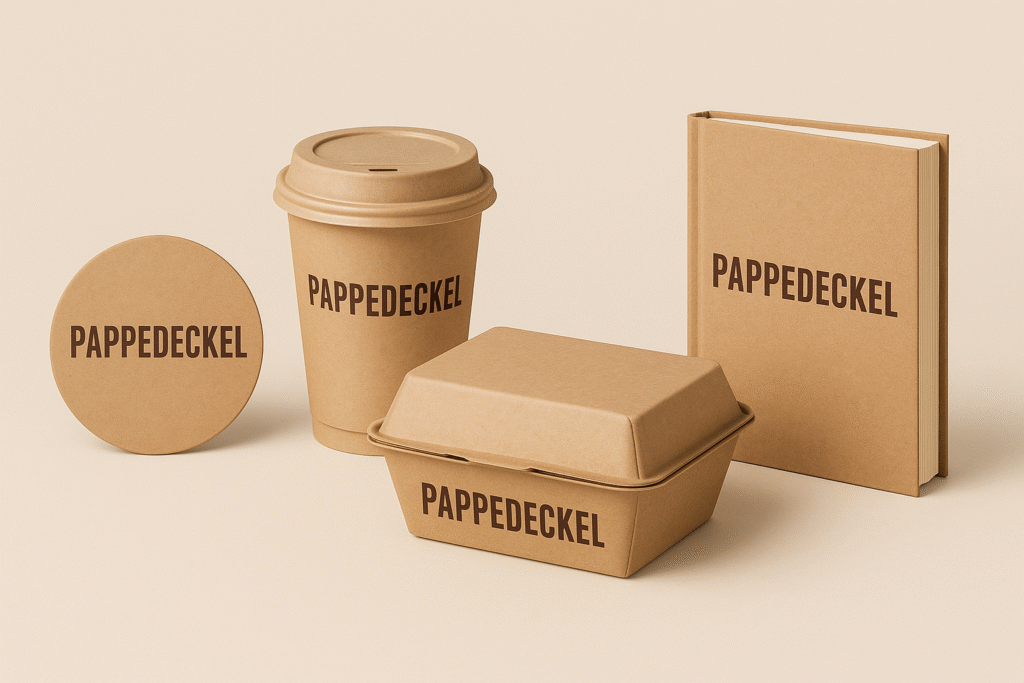In the world of sustainable packaging, few items seem as modest yet as impactful as the Pappedeckel — a German term that literally means cardboard lid. At first glance, it might look like just another disposable item used to cover coffee cups or containers. However, behind this small, circular piece of cardboard lies a growing movement toward eco-conscious living and waste reduction. As more businesses and consumers turn away from plastic, the Pappedeckel has become a symbol of practicality, innovation, and environmental responsibility.
What Is a Pappedeckel?
A Pappedeckel is a lid made from thick paperboard or recycled cardboard. It’s commonly used for coffee-to-go cups, soup containers, ice cream tubs, and other takeaway packaging. Unlike plastic lids, which are difficult to recycle and often end up polluting landfills and oceans, Pappedeckel products are biodegradable and compostable.
They are typically crafted from natural fibers, without harmful coatings or plastics. Some manufacturers use water-based barriers to make the lid heat- and moisture-resistant, maintaining the integrity of the drink or food while still being eco-friendly.
The Environmental Importance of the Pappedeckel
The Pappedeckel’s rise in popularity aligns with a broader push toward sustainability in packaging. Traditional plastic lids are lightweight and convenient, but they pose a serious threat to ecosystems. Plastic waste takes hundreds of years to decompose, releasing toxins and microplastics into the environment.
By contrast, Pappedeckel lids decompose naturally within weeks or months under composting conditions. Many are made from FSC-certified materials, ensuring that the wood pulp used comes from responsibly managed forests. This small shift — replacing plastic lids with cardboard ones — has a cumulative impact when adopted at scale by cafés, restaurants, and event organizers.
How Pappedeckel Is Changing the Coffee Culture
Coffee lovers across Europe, especially in Germany, have embraced the Pappedeckel as part of a sustainable lifestyle. Major coffee chains and local cafés alike are now using cardboard lids for takeaway beverages. These lids not only align with the green branding that many businesses strive for, but they also enhance customer experience.
Unlike plastic, cardboard does not alter the taste or smell of coffee. It also provides a warmer, more natural texture to the touch, making it more pleasant to handle. Moreover, many Pappedeckel designs feature creative printing options — from brand logos to sustainability messages — turning the lid into a tiny canvas for awareness and marketing.
Production and Design Innovation
Manufacturers are continuously improving the design and performance of Pappedeckel products. Early versions sometimes struggled with leakage or fit issues, but modern engineering has solved these problems.
Today’s lids often use layered materials for better insulation and sealing. Some even incorporate folding mechanisms or snap-on structures for a more secure fit. A few innovative companies are experimenting with plant-based coatings or biopolymer additives to further enhance durability without sacrificing compostability.
The result is a reliable, eco-conscious lid that performs just as well as — or even better than — its plastic counterparts.
Economic and Cultural Impact
Switching to Pappedeckel lids does more than reduce plastic use — it also supports local industries focused on paper recycling and sustainable manufacturing. Germany, known for its strong recycling culture, has been at the forefront of this shift.
Businesses that adopt these lids often find that consumers appreciate their commitment to the environment. In a time when eco-friendly branding influences purchasing decisions, the simple act of choosing cardboard over plastic can strengthen customer loyalty and company reputation.
The Pappedeckel has even become a cultural symbol in some areas — representing mindful consumption and responsibility toward future generations.
Challenges and the Path Forward
While Pappedeckel products are highly sustainable, challenges remain. Production costs are sometimes higher than plastic alternatives, and certain markets lack the infrastructure for industrial composting. Additionally, not all paper lids can withstand extreme temperatures or long storage times without compromising quality.
However, ongoing research and innovation continue to bridge these gaps. With government regulations banning single-use plastics in many regions, the demand for cardboard alternatives is only expected to grow. Manufacturers are responding with improved materials and production techniques that balance cost, quality, and sustainability.
Conclusion: Small Lid, Big Impact
The Pappedeckel may be a small object, but its contribution to the fight against plastic pollution is significant. It reflects a broader global trend where everyday items are being reimagined with environmental awareness in mind.
From coffee cups to food containers, this unassuming cardboard lid stands as proof that innovation doesn’t always have to be high-tech — sometimes, it’s as simple as replacing plastic with paper. As the world continues to search for eco-friendly solutions, the Pappedeckel reminds us that every sustainable choice, no matter how small, helps create a cleaner, greener future.
